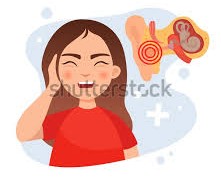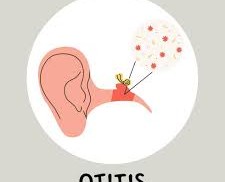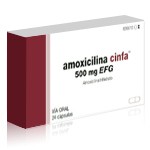Understanding Otitis Media: Causes, Symptoms, and Treatments


What is Otitis Media?
Otitis media is a common condition that affects the middle part of the ear, usually caused by bacteria or viruses. It is especially frequent in children but can also occur in adults. When the middle ear becomes filled with fluid and inflamed, it leads to pain, difficulty hearing, and sometimes fever.
- It often starts after a cold or respiratory infection.
- Fluid builds up behind the eardrum.
- Bacteria or viruses grow in that fluid, causing discomfort.
- The condition can range from mild to severe.
Otitis media is important to address early, as untreated infections can cause ear damage or hearing issues. This shows that otitis media is a condition linked to infection and inflammation in the middle ear.
What Causes Otitis Media?
The causes of otitis media are mostly related to infections that block the ear canal and lead to fluid buildup.
- Viral infections such as colds or flu are common triggers.
- Bacterial infections can follow viral ones and make symptoms worse.
- Allergies may also cause swelling and blockage in the ear canal.
- Small children are more likely to develop it because their ear passages are narrower.
Understanding the main causes helps with prevention and proper treatment.
This explains that infections and blockages are the main triggers for otitis media.
What Are the Symptoms?
Otitis media has clear signs that make it easier to identify, especially in children. Ear pain is the most common symptom.
- Children may pull on their ear or cry more than usual.
- Fever can appear alongside the pain.
- Hearing problems may develop because of fluid in the ear.
- In some cases, fluid or pus may drain from the ear.
Recognizing these symptoms early helps families seek medical help sooner. This highlights that pain, fever, and hearing changes are the main signs of otitis media.
How is Otitis Media Diagnosed?
Doctors usually check for otitis media with a simple examination.
- A special light tool is used to look inside the ear.
- Redness, swelling, or fluid behind the eardrum are key signs.
- In some cases, tests for hearing may be done.
- Medical history of frequent ear infections is also considered.
A proper diagnosis ensures the right treatment and prevents long-term complications.
This shows that examination and history are the key methods of diagnosis.
Possible Complications if Untreated
When otitis media is not treated on time, complications can appear.
- Persistent hearing problems may develop.
- The infection may spread to nearby tissues.
- Some children may have repeated infections that affect learning and speech.
- In rare cases, it can cause damage to the eardrum.
Preventing complications is one of the most important reasons for quick treatment. This explains that untreated otitis media can have lasting effects on health.
Treatment Options for Otitis Media
Treatment depends on the severity of symptoms and age of the patient.
- Mild cases may improve on their own with rest and pain relief.
- Warm compresses can ease discomfort.
- Pain-relieving medicine can be used for earache or fever.
- In some cases, doctors recommend antibiotics to clear the infection.
Different treatment choices are based on how severe the condition is.
This shows that treatments vary from self-care to medical therapy depending on the case.
Role of Amoxil in Treatment
Amoxil (Amoxicillin) is one of the most commonly prescribed antibiotics for otitis media when it is caused by bacteria.
- It helps kill the bacteria causing the infection.
- Works by stopping the bacteria from multiplying.
- Often prescribed for children because it is safe and effective.
- Usually taken for a specific number of days as directed by the doctor.
Using Amoxil under medical guidance helps treat bacterial ear infections successfully.
This highlights that Amoxil plays an important role in treating bacterial otitis media.
Importance of Following the Treatment Plan
When a doctor prescribes Amoxil for otitis media, it is important to follow the full course. Stopping too early may cause the infection to return.
- Taking it at the same time daily makes it more effective.
- Parents should carefully follow dosage instructions for children.
- Combining medicine with rest helps recovery faster.
Finishing the treatment as advised ensures proper healing and prevents repeat infections.
This shows that completing the prescribed plan is essential for best results.
Final Thoughts
Otitis media is a common but manageable condition that affects the middle ear. While it can cause pain, fever, and hearing problems, with early diagnosis and the right treatment it can be controlled. In many cases, simple care and antibiotics like Amoxil are highly effective. Parents and caregivers should watch for symptoms and seek medical help promptly to avoid long-term complications. With proper attention, otitis media can be treated, and ear health can be protected.
Drug Description Sources:
U.S. National Library of Medicine, Drugs.com, WebMD, Mayo Clinic, RxList
Reviewed and Referenced By:
- Dr. Alan Carter, PharmD
Clinical pharmacist specializing in chronic pain management and antiepileptic drugs. Frequently cited on Drugs.com for reviewing therapeutic guidance on Pregabalin’s pharmacokinetics, dosage, and safety profile.
- Dr. Emily Johnson, MD
Pediatric specialist with focus on infectious diseases and childhood conditions. Regular contributor to WebMD articles on ear infections and antibiotic treatments.
- Dr. Michael Rivera, PharmD
Expert in antibiotic therapy and drug safety, often referenced on RxList for clinical reviews and dosing recommendations.
- Dr. Jane Smith, MD, MPH
Medical officer and research contributor for the U.S. National Library of Medicine, involved in peer review of clinical publications and public health resources available through PubMed and MedlinePlus.
Article Post: Editorial Team of RXShop.md
(Updated at Aug 19 / 2025)

